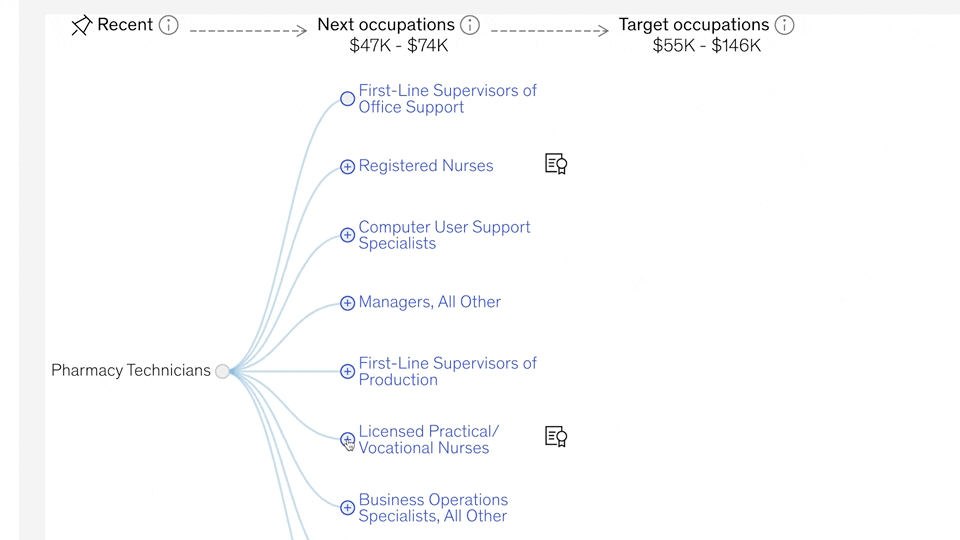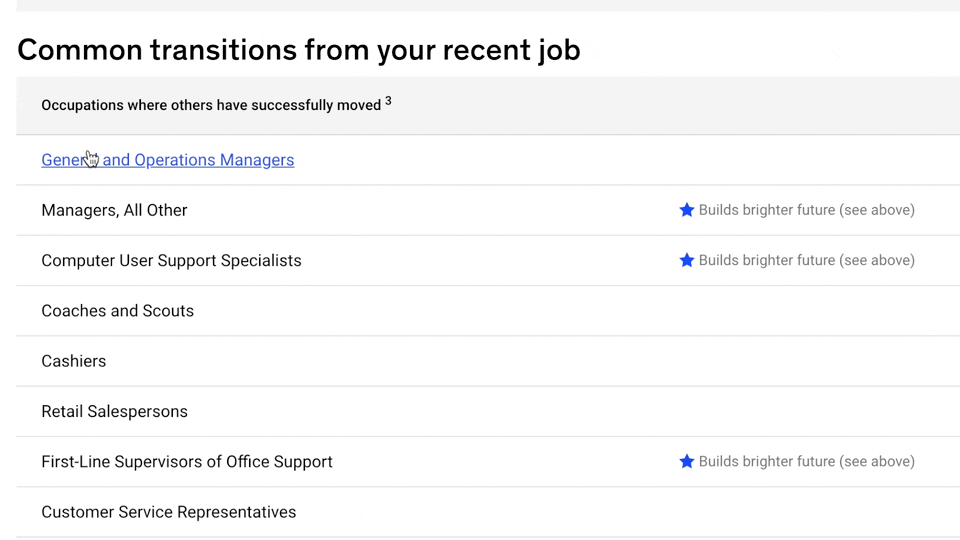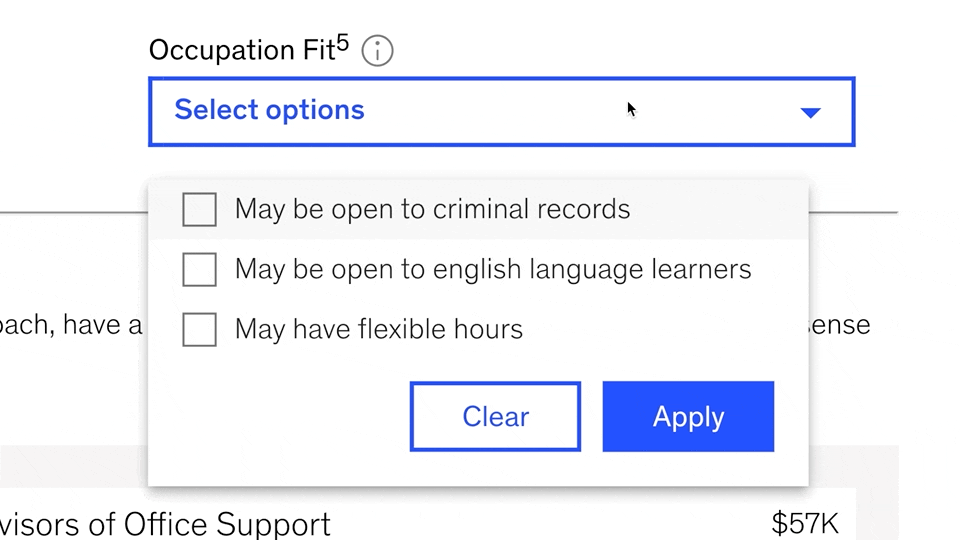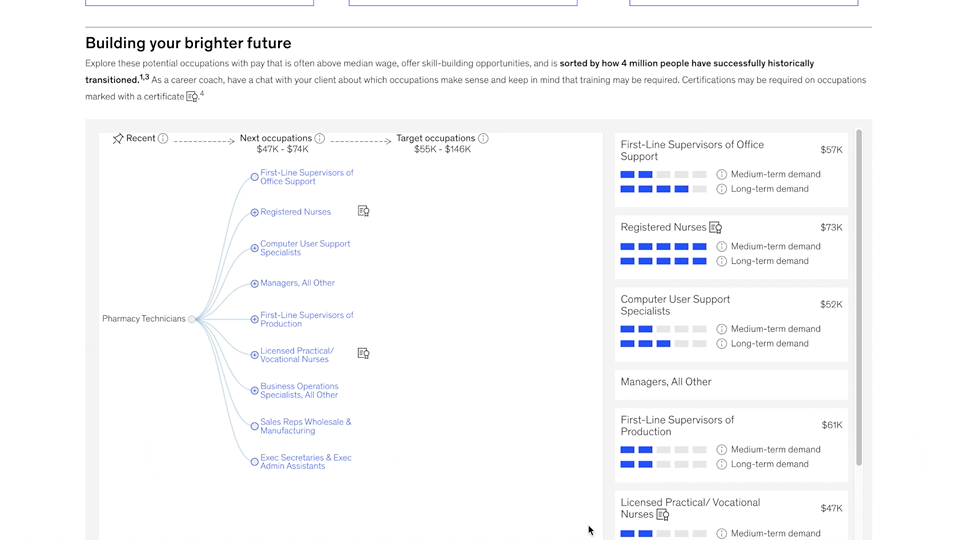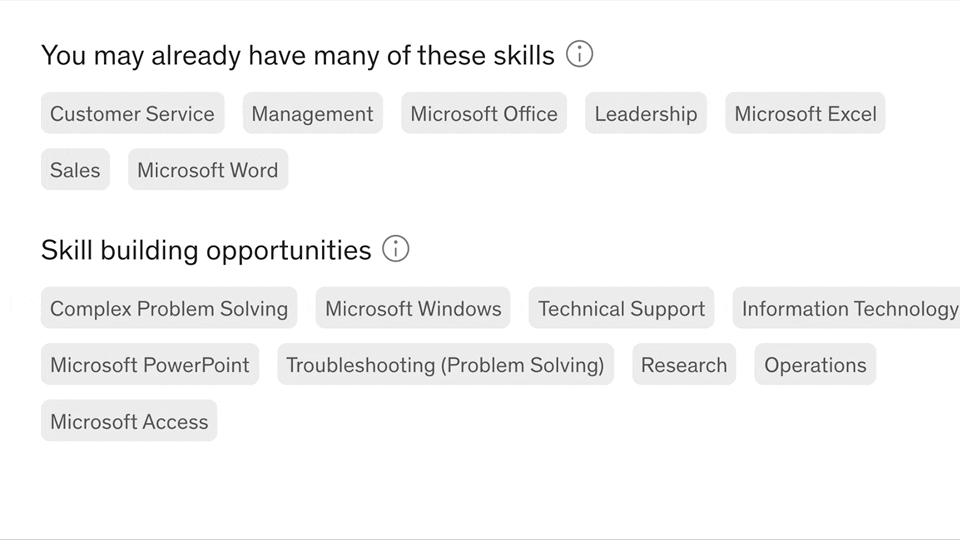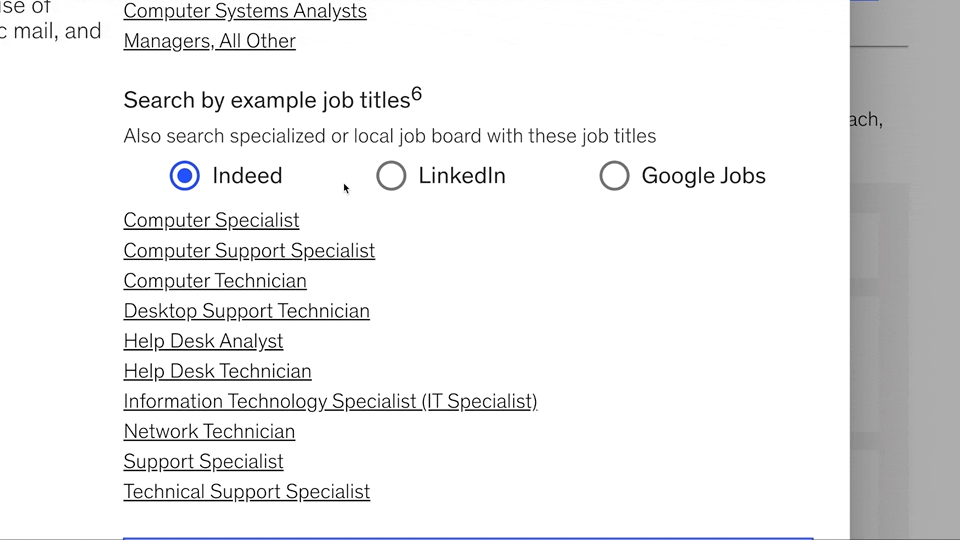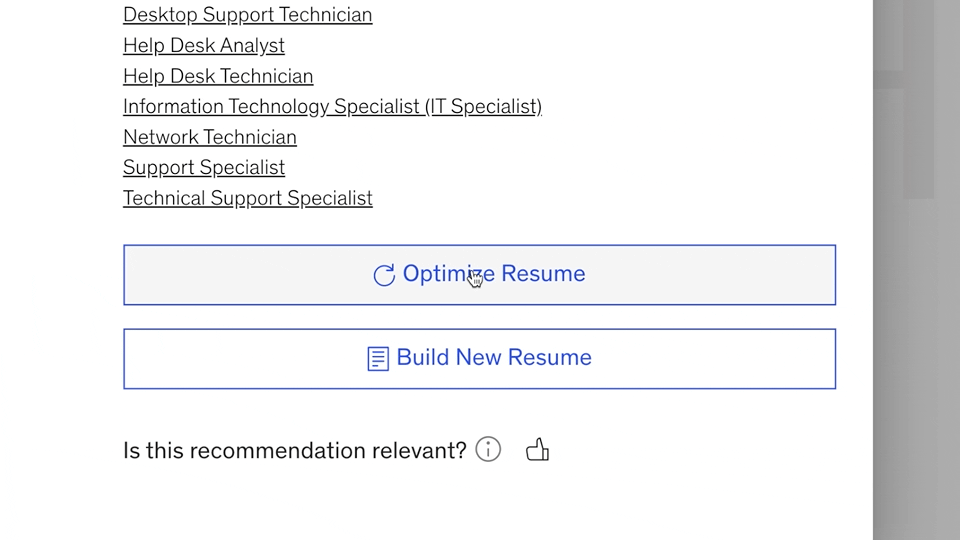1 Data pulled from EMSI in 2020 indicate individuals’ historical transitions between occupations, based on four million individuals who do not have four-year degrees. Shows only occupation transitions made by more than 50 individuals (Large enough sample rule).
2 Recent occupations: Filtered by low-wage incomes (defined here as less than the national individual median income, approximately $38,000) and mid-wage incomes ($38,000–$42,000) and occupations that have at least one “next” or “target” occupation. Income thresholds for workers without a four-year degree were triangulated from national data, based on organization analysis using data from EMSI, the McKinsey Global Institute, and the US Bureau of Labor Statistics.
Next-step occupations: Occupations that have middle-to-high incomes ($42,000 and higher); in which historically at least 25 percent of the employed do not have a bachelor’s degree; >33 percent proportion of transitions from origins; <=33 percent of proportion of transitions to targets; and are not in O*NET job category 5, which refers to occupations that require graduate school.
Target occupations: Occupations that have middle-to-high incomes ($42,000 and higher), Small, very low, or in-demand risk of long-term automation or offshoring (McKinsey Global Institute’s “jobs at risk” score), more than 10 percent employed historically without a bachelor’s degree, and not in O*NET job category 5, which refers to occupations that require graduate school.
3 Burning Glass Technologies: data were pulled from job postings from 2015 to 2019 and include data and analysis for occupational fit for criminal record, certifications, flexible hours, and English-language learners.
EMSI: data were pulled in 2020 and include transition likelihood, occupation title name, nation median salary, salary range, number of unemployed without a bachelor’s degree, and skills by occupation.
McKinsey Global Institute: Data were pulled in 2020 and include 12-month and 3.5-year demand outlook (based on the A1 scenario for the economic impact of the COVID-19 crisis) developed together with Oxford Economics; risk of automation or offshoring; and occupational groupings.
U.S. Department of Labor (O*NET & Census Bureau CPS): Data were pulled in 2020 and include occupation descriptions, skills, and related job titles. Where applicable, we shortened some occupation titles and modified generic descriptions of occupations.
4 The future of work in America: People and places, today and tomorrow (McKinsey Global Institute).
5 “Certifications may be required”: includes occupations for which more than 40 percent of job postings from 2015 to 2019 requested a nondegree certification, certificate, or license, as analyzed by Burning Glass Technologies.
“May be open to English-language learners”: based on O*NET combined score of importance of English language (knowledge of the structure and content of the English language including the meaning and spelling of words, rules of composition and grammar, and pronunciation) and score of English importance (in general, the significance and importance of knowing English for the job) where the score is less than 55.
“May have flexible hours”: based on Burning Glass Technologies’ job-posting data from 2015 to 2019 for which more than 10 percent advertise part-time work or the O*NET score for work schedule (description of the role that time plays in the way the worker performs the tasks required by the job and how regular the work schedule is) is more than 1.5.
“May not require a background check”: based on Burning Glass Technologies’ job-posting data from 2015 to 2019 where less than 20 percent of job postings advertise background checks or are not healthcare jobs as designated by McKinsey Global Institute categories.
6 The three linked job boards provide a comprehensive view of national job postings. They were selected from more than ten job boards for their comprehensiveness, relevance, fit to target population, and quantity of users. Contact the Rework America Alliance for detailed selection criteria and for additional job boards to be considered in the next iteration of this tool. Google for Jobs and LinkedIn (which is affiliated with Microsoft) are members of the Alliance.
Disclaimer: Occupations in “Bringing job progression insights to the front line” reflect occupations into which individuals have moved in the past. The past is not a predictor of future events or future hiring demand. In some cases, relatively few (1 to 5 percent) individuals have made such a transition. Moreover, occupations may require training, and making a transition may not make sense for every job seeker. In addition, regional differences may affect the availability and feasibility of transitions. This tool does not guarantee that an employer will be hiring for a specific occupation in a geography. This tool is provided “as is,” solely for informational purposes and is designed to be used with a career coach or navigator to interpret the content. Demand data were pulled December 2020; medium-term demand data expires December 2021 and long-term demand data expires June 2023.
